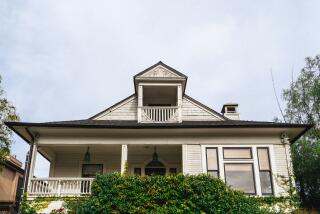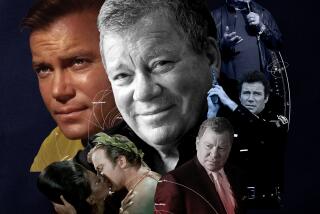When Plans Go Astray
Sometimes no matter how much you plan, things just don’t work out.
We had finished a tour of the continent and had planned to stay a few days at the Cunard Hotel, in Hammersmith, which is just outside of London.
The only problem was that while we had been on our tour, the hotel had been sold, renamed and not one of the new employees was able to find our reservation.
One of the girls at the desk was so swamped by other people whose reservations could not be found she was on the verge of tears.
Need for a Cab
“Perhaps,” she all but pleaded, “I could call you a cab?” While I was thinking up a smart answer, my wife, Joyce, was patting the girl’s hand and telling her it was all right and that we would, indeed, like a cab.
I felt betrayed.
“Now, let’s be tolerant. All these people are new here.”
I picked up our bags and moved to the stairway, muttering as loudly as I could about not caring if “all these people” ever got old.
The cab was waiting almost before we got downstairs.
“On holiday, are you?” the driver asked.
We told him we were, and I asked if he knew of any good hotels in London.
“Why London, sir? It’s a nice place to visit, but you don’t really want to live there. It’s noisy, old, smelly, like any big city, full of lorrie fumes and tourists. If you’ll pardon me, why not Chiswick?” He pronounced it Chiz-ick.
‘No Fumes, No Tourists’
“Where’s Chiswick?”
“A few miles out. No noise. No fumes. No tourists. Easy commute to the city. I know a nice clean little hotel. Manager’s boys go to school wif my boy. Close to trains and about a furd the price.”
“A furd?”
“That’s cockney for anyfing wif free in it.” He held up three fingers. “Actually, I suppose, I should have said ‘alf the price.”
The Chiswick Hotel was less than half and, for us, it was perfect. Don and Julie Carlin, the managers and part owners, were full of enthusiasm and information.
“Just 10 minutes from here,” Julie said, “down on the river there are some wonderful pubs. You’ve heard of the Dove, the little pub where Princess Margaret and Anthony Armstrong Jones did their courting.”
“And then,” Don said, “five minutes away, Hogarth’s house.”
“Well,” Joyce said, “we were actually going to go into London and see if we could get some theater tickets.”
“Oh no,” Julie said. “That’s my job. I’ll get you your tickets. You’ve got to see our local treasures.”
“We’ll make you a map.”
I confessed that I didn’t really know who Hogarth was.
“Except that he was a painter, neither do I,” Joyce said. “It’s one of those names you hear all your life but. . . .” She finished with a shrug.
“You’ve got to go there,” Don said.
“Ask to see ‘The Politician,’ “ Julie said. “I love it. For me, it’s the one picture that ties it all together. You’ll see.”
After we’d unpacked, Don drew us a map.
We followed it, down Chiswick Road into the tunnel under a motorway, and came up on an island of peace.
The house, with its typical English garden, was behind high walls and looked as if it belonged in the 1700s.
The curator gave us a thumbnail sketch of its former owner.
Ahead of His Time
William Hogarth was one of the first and best of the political cartoonists of the early 1700s and an artist so far ahead of his time that he actually painted people the way they looked.
The walls of his house were covered with copies of his work, the most famous of which were a series he called “The Rakes Progress,” “The Harlot’s Progress,” “Marriage a la Mode” and “The Election.”
Since we were the only guests, the curator showed us around.
“We live together, you know, Hogarth’s ghost and I. I have the apartment on the third floor here. It’s part of the government arrangement. The apartment, not the ghost.”
We stopped in a well-lit room.
“He sketched at this window,” the curator said. “And I imagine he used to pause in his work and stare out at the fields and forests that were here. This was a country home then.”
Joyce asked about “The Politician.” The curator led us to it.
“A favorite of mine. Do you like it?”
It was a print of a politician sitting at a table holding a lighted candle closely so he could read a newspaper. The paper, according to the caption, told of the problems in Europe. But the real point was that, though the candle had set fire to the man’s hat, he was so intent on the problems abroad he was unaware of the more immediate danger.
“You see?” said the custodian, “things really never change.”
“I like it very much,” Joyce said.
Though the curator had no prints to sell, he gave us very careful directions to the Sir John Soanes Museum in London, where many of Hogarth’s original paintings were on display and where, he was absolutely certain, we could get the print we wanted.
Steak and Kidney Pie
We stopped at the Dove for lunch and a little refreshment while we waited for a table.
It was a 30-minute wait. I got so “refreshed” I almost went to sleep, face first, in my steak and kidney pie. English beer is sneaky. Excellent, but sneaky.
By following the directions the Hogarth House curator had given us, to the letter, we arrived at Lincoln’s Inn Fields and followed the signs to No. 12 and 13, a four-story brick residence with an ornate marble facade.
The Sir John Soanes Museum faced directly on the green, which was filled with people enjoying the sun.
Neither of us had ever been in a place like the Soanes before. It was actually a fully furnished, early 18th-Century townhouse as well as a museum, and there were dozens of paintings, many of which we’d seen in cartoon or etching on the walls of Hogarth’s home.
Additionally, the great English architect, Sir John Soanes, appeared to have brought home just about everything he’d collected on his world travels. It was a fascinating house.
When we asked about buying a print of “The Politician,” the curator said he couldn’t help us but that we just might find one at the Old Curiousity Shoppe.
“The Old Curiousity Shoppe?” Joyce asked. “Charles Dickens’ Old Curiousity Shoppe? It still exists?”
“Oh yes, doing quite well, actually. Just across the green. Where it’s always been.”
Lincoln’s Inn Fields backs onto the area adjacent to the Courts. As we were crossing the green, a man who looked like he might have been an attorney stepped off the path and onto the lawn. He put his briefcase down and began taking off his clothes. He stopped when he got down to his undershorts, lay down on the lawn, put his head on his briefcase, his hat over the front part of his shorts and closed his eyes.
‘Not Much Sun’
An old lady who’d stopped next to us shrugged. “Well, we don’t get all that much sun, you know.
“Old Curiousity Shoppe?” She pointed on ahead. “Around the corner, but I should think this would be enough curiosity for one day.”
It was like every illustration we’d ever seen of it. It was not a museum, it was a working store, but almost a miniature. So small and compact that customers were asked to leave their coats and cases downstairs, not because of possible theft but because it was difficult enough unencumbered to turn around without knocking something off a table or a wall.
Joyce and the proprietor searched through stacks for several minutes before they found it.
“It’s not original, I’m afraid. It’s only a copy, made in 1802, but it’s very faithful, don’t you think?”
Tickets to Musicals
Back at the Chiswick, Julie had left a note on our bed. She’d managed to get tickets to “Cats,” “Barnum” and “Me and My Gal.”
Joyce propped her picture of “The Politician” up on the dresser.
“It’s been a big day,” I said. “Tickets to three top shows, good hotel at about ‘a furd the price,’ lunch at the Dove, went through two museums, saw an Englishman take his clothes off in public, found the Old Curiousity Shoppe and got your ‘Politician.’ ”
We were propped up in bed, ready to put the light out. Joyce stared at her print. “You know how you tell me that when you lean on the rails of old bridges or touch some of the old buildings, you feel the history creeping into you, up through your hands?
“This picture does that for me. Julie’s right. It ties it all together. We’re the same as they are. And ‘now’ is not so different from ‘then’. . . .I mean 1713 and 1987. We do the same things now, make the same stupid mistakes and even laugh at the same things. It’s like it’s really all just one page in the history book.”
Things don’t always turn out the way you plan them. Thank God.
-- -- --
My wife and I have been to London many times, but we’ve never had a better, more rewarding or more fun first day than the one described above.
For that reason, I’ve listed the addresses of those places mentioned: Chiswick Hotel, 73 High Road, Chiswick, London W4 2LS; Hogarth House, Hogarth Lane and Great West Road, Chiswick, London W4 2LS (ask directions in Chiswick and follow the signs); the Dove Pub, 19 Upper Mall, Hammersmith; Sir John Soanes Museum, 13 Lincoln’s Inn Fields; Old Curiousity Shoppe, 13/14 Portsmouth St.
That first day we had breakfast at Victoria Station (not recommended for eating, but great for transportation) and our pub lunch at the Dove.
Nearer to the Soanes Museum and the Old Curiousity Shoppe is the Portsmouth pub. It has an exceptional Ploughman’s Lunch, and the beer is pretty good too.
We had our dinner at the Chiswick Grill, a block from the hotel. They serve a top quality T-bone steak and have a fine cook. He’s also very good with fish and Greek dishes.
We had all our breakfasts after the first day at the Chiswick. Excellent full English breakfast and great coffee.
More to Read
Sign up for The Wild
We’ll help you find the best places to hike, bike and run, as well as the perfect silent spots for meditation and yoga.
You may occasionally receive promotional content from the Los Angeles Times.






